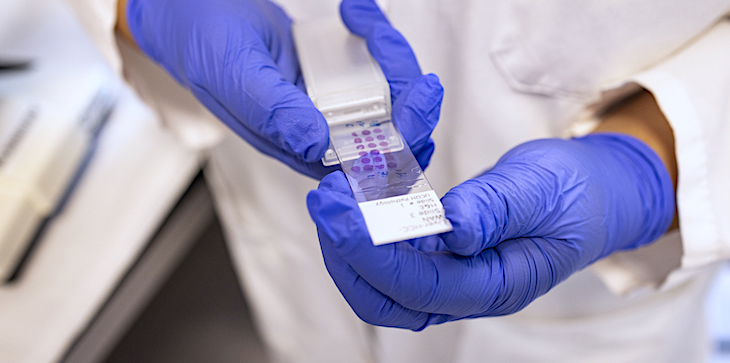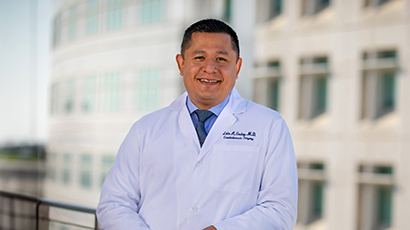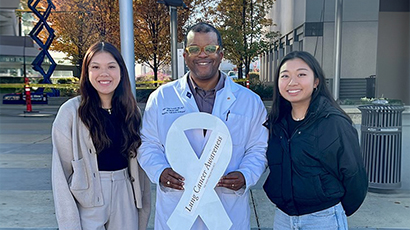Liver cancer is a leading cause of cancer deaths worldwide, accounting for the yearly loss of more than 700,000 lives. Each year in the United States, about 25,000 men and 11,000 women are diagnosed with liver cancer, while 19,000 men and 9,000 women die from the disease.
Risk factors for liver cancer include long-term hepatitis B or hepatitis C infections, obesity, non-alcoholic fatty liver disease, excess alcohol consumption, auto-immune liver disease and exposure to aflatoxins (a toxin found in moldy peanuts or grains).
Symptoms of Liver Cancer
- Weight loss/loss of appetite
- Nausea or vomiting
- Enlarged liver (fullness under the ribs on the right side)
- Enlarged spleen (fullness under the ribs on the left side)
- Pain in the abdomen or near the right shoulder blade
- Swelling or fluid build-up in the abdomen
- Itching, yellowing of the skin and eyes
HCC
The most common type of liver cancer, hepatocellular carcinoma (HCC), is increasingly taking lives. The rising number of cases is due to the risk factors above, especially growing obesity rates. UC Davis Comprehensive Cancer Center researchers are leading the way in finding a cure.
Galectin 1 protein
Researchers at UC Davis Comprehensive Cancer Center have shown that inhibiting a specific protein using gene therapy can shrink liver cancer in mice. Silencing the galectin 1 (Gal1) protein, which is often over-expressed in liver cancer, also improved the anti-cancer immune response and increased the number of cancer-fighting killer T cells inside tumors.
“We’ve long known that Gal1 is a biomarker for hepatocellular carcinoma (liver cancer),” said Yu-Jui Yvonne Wan, a distinguished professor in the Department of Pathology and Laboratory Medicine and senior author of the study. “Gal1 expression in normal tissue is quite low and increases with fatty liver disease, inflammation and liver carcinogenesis. Now, we can see that Gal1 is more than a biomarker — it’s a potential therapeutic target.”
Cancer that starts in the liver is one of the world’s most common cancers. And the numbers are increasing, with incident rates more than tripling since the 1980s. The disease also can be quite deadly. In advanced stages, the five-year survival rate is less than 20%.
Additional scientists participating in the research included: Ying Hu, Farzam Vaziri and Dongguang Wei from UC Davis; Xin Chen from University of Hawaii; and Jinping Lai from Kaiser Permanente Sacramento Medical Center.
microRNA-22
The University of California has filed a patent application investigating the use of microRNA-22 (miR-22) gene therapy for treating hepatic and metabolic diseases. They took the step after cancer center research showed that it holds promise as an effective treatment for liver cancer.”
MicroRNAs are small molecules that contain ribonucleic acid (RNA), a type of genetic material. MicroRNAs are widely found in plants and animals. They are “non-coding,” meaning they do not make proteins like some other RNA molecules.
Wan and Ying Hu, an assistant professional researcher in Wan’s lab, made the discovery.
The researchers found that gene therapy that induces the body to create miR-22, a naturally occurring molecule, successfully treated mice with hepatocellular carcinoma.
The miR-22 treatment reduced liver inflammation and produced better survival outcomes with no observable toxicity compared to the FDA-approved liver cancer treatment lenvatinib.
“This research introduces miR-22 gene therapy as a promising and innovative approach for treating hepatocellular carcinoma,” Wan said. “The study’s findings suggest that miR-22 therapy could provide better survival outcomes, enhance anti-tumor immunity, improve metabolism and reduce inflammation.”
Other scientists involved with the research study included Tahereh Setayesh, Farzam Vaziri, Xuesong Wu and Samuel T. Hwang from UC Davis.





